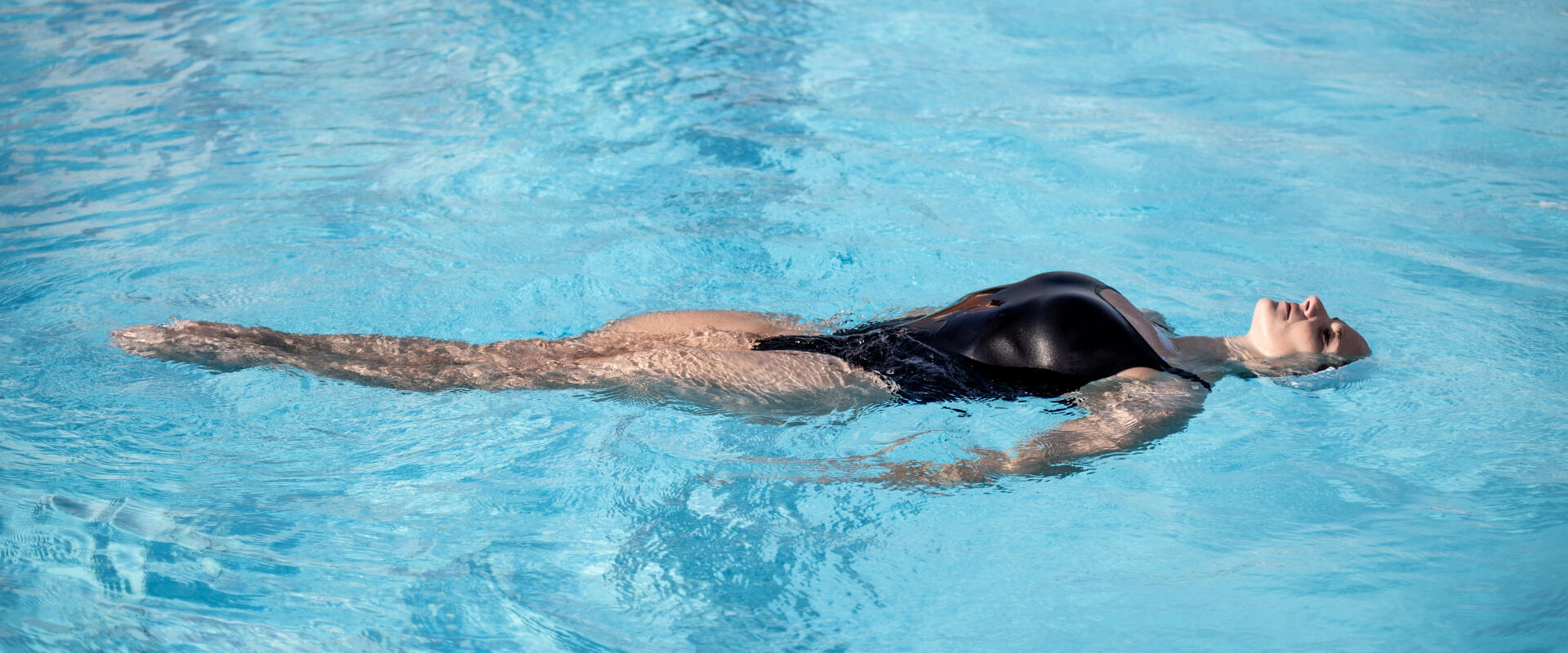The sailboat, ballet leg, flamingo and double leg: what are they?
It all starts in the layout position: your body is horizontal, stretched and taut. You stay afloat by sculling with your hands, but also by stretching!
You must be stretched tight from the tips of your toes to the top of your head! Your head must also be straight and stretched, with your chin pointing towards the ceiling. You can also stretch properly by pretending that an imaginary wire is pulling your head one way and your feet in the opposite direction. Try to make yourself as long as possible!








